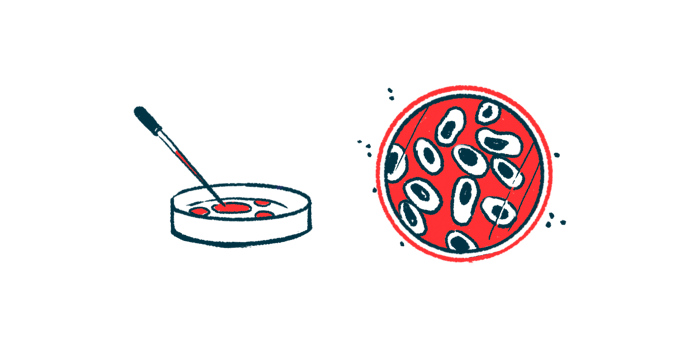New cell models available to help advance DMD research
Human muscle cell models by bit.bio may open door to new treatment strategies

Synthetic biology company bit.bio has launched two new human muscle cell models to advance research into new treatment strategies for Duchenne muscular dystrophy (DMD).
The two models, dubbed ioSkeletal Myocytes DMD Exon 44 Deletion, and ioSkeletal Myocytes DMD Exon 52 Deletion, are the eighth and ninth products that bit.bio has launched this year as part of its ioCell brand.
“My sincere hope is that this latest launch in our ioCell research product range will support and accelerate the development of effective treatments for DMD,” Mark Kotter, CEO of bit.bio, said in a press release.
DMD is caused by mutations in the gene DMD, which provides instructions for making a protein called dystrophin. The dystrophin protein normally helps to give structural support to muscle cells, cushioning them from damage during the rigorous process of muscle contractions.
In DMD, no functional dystrophin protein is made, and as a result muscle cells accrue more wear-and-tear damage over time, ultimately leading to symptoms like progressive muscle weakness.
Some of the most common DMD-causing mutations are exon deletions where one or more of these sections is missing. Exons are the sections of DNA that contain information to produce proteins. The two new models harbor deletions in exon 44 and 52, respectively, which are among the most common DMD-causing mutations according to bit.bio.
Studying the underlying biology of Duchenne MD
In order to study the underlying biology of DMD and test potential treatments, researchers often rely on models using human myocytes (muscle cells).
Scientists usually have used either primary cells — cells collected directly from patients — or immortalized cells, where myocytes are genetically engineered so that they will grow indefinitely in a laboratory setting. While these models can be useful, they have notable drawbacks. Primary cells are hard to obtain and often show a lot of variability from person to person, and the genetic alterations used to immortalize cells also can change the cells’ behavior.
Bit.bio’s ioSkeletal Myocytes DMD models, in which stem cells are precision programmed, aim to address these issues by providing a consistent source of these cells that can be produced at an industrial scale.
“These new disease models provide scientists with a consistent and scalable source of cells to study how exon deletions impact muscle cell function, and enable investigation of therapeutic candidates for dystrophin restoration,” said Farah Patell-Socha, vice president of research products at bit.bio. “Their suitability for use in multi-well plate formats means screening experiments can be conducted in a physiologically relevant human cell model on a larger scale, overcoming some of the limitations associated with the use of animal models and primary cells.”
In addition to these two new models harboring DMD-causing mutations, bit.bio previously launched a similar line of wild-type myocytes that don’t harbor any mutations. Apart from the specific mutations in the DMD gene, the disease models and the wild type cells are genetically identical. As such, any differences between the cells seen in experiments can be confidently assumed to be a direct result of the specific mutation, the company stated.
“Having access to a relevant translational model for DMD will help accelerate the work of researchers developing treatments for this relentlessly progressive degenerative disease,” Patell-Socha said.
Duchenne MD clinical needs remain unmet
“DMD is a complex and relentless condition and a major challenge. Despite recent advances, I know from personal experience that many unmet clinical needs remain,” Kotter added.
The new models were developed as part of a partnership between bit.bio and Charles River Laboratories International. Charles River has evaluated the models as a platform for drug discovery, including showing that treatment with a type of genetic medicine called an antisense oligonucleotide can restore production of the dystrophin protein in cells harboring a deletion in exon 44.
“The ioSkeletal Myocytes DMD disease models are an important step towards the development of new treatments for DMD. Together with the state-of-the-art drug discovery technologies and expertise in our teams we are now able to help our clients to demonstrate mechanistic, and in the future functional effects of potential new drugs, at an early stage of drug development,” said Marijn Vlaming, PhD, head of discovery sciences at Charles River.







